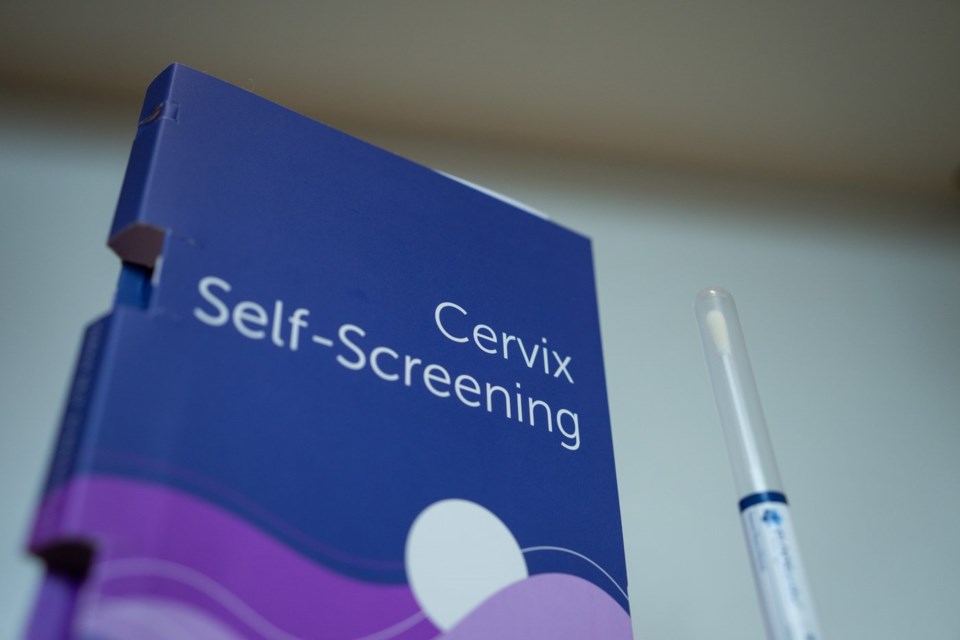TORONTO — Ontario will replace its main method of cervical cancer screening next week to a more accurate and less frequent test, but the dreaded speculum exam is not in the rear-view just yet.
Human papillomavirus (HPV) tests in the province will replace Pap tests, also known as Pap smears or cervical cytology, on March 3, following similar moves in British Columbia and Prince Edward Island.
Both tests aim to detect cervical cancer and involve collecting a cell sample from the cervix. Ontario Health says the HPV test is more accurate at catching cervical cancer than the previous method, which will mean most patients can get tested less often and start their routine monitoring later.
But self-screening kits that have been adopted in British Columbia won’t be a part of the upcoming rollout in Ontario, which means patients still need to visit the doctor to get tested.
Dr. Amanda Selk, an obstetrician gynecologist in Toronto, explains what you need to know ahead of the change.
WHAT'S DIFFERENT?
Ontario doctors will pivot to testing for HPV first when screening for cervical cancer, rather than conducting a cytology test. The test will feel the same for the patient. It will still involve a doctor, nurse or midwife inserting a speculum into the patient’s vagina to swab their cervix for a sample that will be sent to a lab. But starting next week, the lab will test for HPV, the primary cause of cervical cancer.
“Previously they would look at the cells taken – it's called cytology – and look for pre-cancer cells, and sometimes they would have slightly abnormal changes that weren't pre-cancer and you would end up with more testing and actually nothing was wrong,” Selk said.
The new method tests for the virus that causes pre-cancer and cancer, catching it earlier, reducing false positives and identifying populations more at risk, Selk said.
HOW OFTEN DO I NEED TO GET TESTED?
Ontario Health guidelines sent to physicians over the last several weeks in preparation for the rollout say cervical cancer screening will be for people aged 25 to 69. That’s several years later than the previous guideline of starting at age 21 for individuals who are or have been sexually active.
For those who test negative for HPV, the interval between tests will be extended to five years, from three.
For positive specimens, the sample taken for HPV testing will undergo a Pap test at the lab to identify if the infection caused cell changes in the cervix, and determine if it's high-risk and likely to cause cancer.
A provincial flow chart sent to doctors shows patients who test positive will be asked to screen again in two years.
After those two years, if the patient’s HPV test comes back negative, they can return to the five-year screening protocol, the document says. Cancer Care Ontario says 80 per cent of HPV infections clear within three years.
Immunocompromised patients will be screened every three years.
WHY IS THIS HAPPENING?
Ontario Health’s screening guide says HPV tests are increasingly being considered the standard of care for cervical screening programs internationally and in many other jurisdictions.
Quebec began a gradual transition to HPV tests in 2023 and Nova Scotia health officials have said they plan to switch in the coming years.
P.E.I. moved to this testing method in 2023 with plans to introduce a cervical cancer self-screening kit that allows patients to collect their own vaginal samples in March 2025.
B.C. began its transition to HPV testing in January 2024 and no longer requires health providers to collect the samples. Patients can self-screen at home by swabbing their own vagina, placing the specimen in a tube and mailing it to a lab for testing.
According to B.C.’s transition document on cervix screening, a patient-collected sample is just as accurate as one collected by a health provider, and reduces barriers to screening for vulnerable populations like transgender patients and those living in more rural and remote communities.
Australia, the Netherlands and the United Kingdom have also adopted the HPV testing model for cervical screening.
WHY ISN'T ONTARIO ROLLING OUT SELF-SCREENING?
Self-screening isn’t part of the rollout plan next week in Ontario.
The Cancer Care Ontario website says self-collected HPV testing is available in the province, but it’s not covered by Ontario Health Insurance Program (OHIP) or recommended by the Ontario Cervical Screening Program.
A spokesperson for Ontario Health said they recognize the potential value of self-collected HPV testing to increase participation in screening. They said a phased approach will allow the province to determine how best to integrate the process.
WHY GET SCREENED?
The incidence of cervical cancer in the country increased by an average of 3.7 per cent per year from 2015 to 2019, and is the fastest-increasing cancer among females, according to the Canadian Cancer Society.
"We're suddenly losing some ground. I think this test will help improve that, but only if patients get screened," Selk said.
She said the fact that many Canadians don't have family doctors could be part of the problem, and acknowledges that the speculum exam is not a favourite among patients.
"It still won't be the most comfortable test, but it's a really good test and when we use it well, cervical cancer is very low. It's very preventable."
This report by The Canadian Press was first published Feb. 25, 2025.
Canadian Press health coverage receives support through a partnership with the Canadian Medical Association. CP is solely responsible for this content.
Hannah Alberga, The Canadian Press



